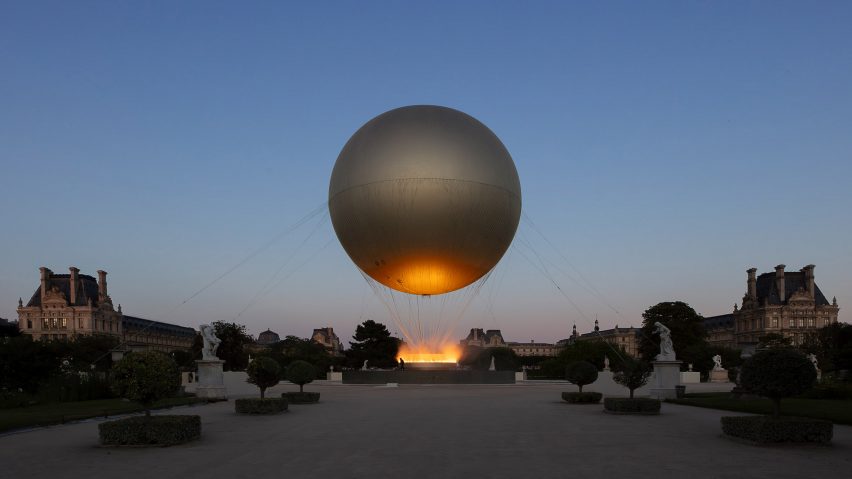
Mathieu Lehanneur's Olympic designs reference the "fragility of life"
Mathieu Lehanneur's designs have played a starring role at the Paris 2024 Olympic Games. In this interview, the French designer explains why his "flying" Olympic cauldron may become a permanent Parisian landmark.
Lehanneur, who is known for his playful and often thought-provoking product designs, began work on the cauldron and the Olympic torch in early 2023 and says he was given free reign over the designs.
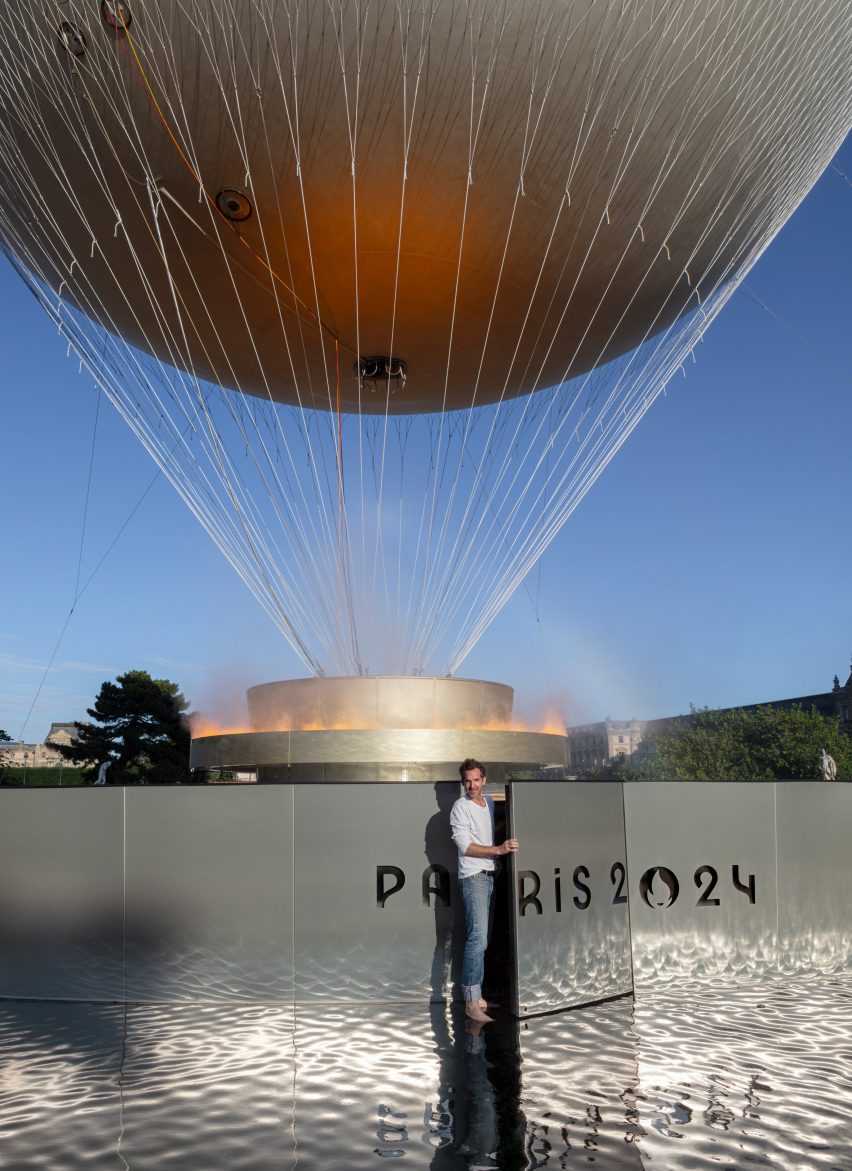
"It was a kind of carte blanche," he told Dezeen.
"For the torch, we received constraints in terms of size – big enough to be visible from the public, high enough to not burn the hairs of the relay runners, and on top of the list was the constraint that the flame cannot be extinguished; it has to always be visible whatever the weather conditions."
Designs were informed by water
The torches and the relay cauldrons lit along the route from Greece, also designed by Lehanneur, have a rippled design informed by the River Seine, which runs through Paris and saw athletes arrive on boats during the opening ceremony.
"I wanted to express the context and took inspiration from Paris itself," Lehanneur explained.
"Instead of being inspired by the historical monuments or the Eiffel Tower, the super well-known postcard monuments, I took inspiration from the river – because La Seine is the stage for the opening ceremony, but also because in a larger sense, the water is a kind of a common link in the journey of the torch relay," he added.
"It started in Greece, and arrived in France from the Mediterranean Sea, arrived in Paris and has been moving into the Seine River and also it took the ocean to reach the Guadeloupe and Martinique islands."
Lehanneur's visualisation of water for his Olympic designs was also inspired by his fascination with making tactile representations of things that are "impossible to catch".
"When you are playing with air, fire or water, I love the fact of trying to freeze something that by definition is impossible to freeze," Lehanneur said.
"It's not far away from the Impressionist painters, they did the same with the light," he added.
"Painters like Monet were always trying to catch a moment; it's this fragility of life and I play on the same idea."
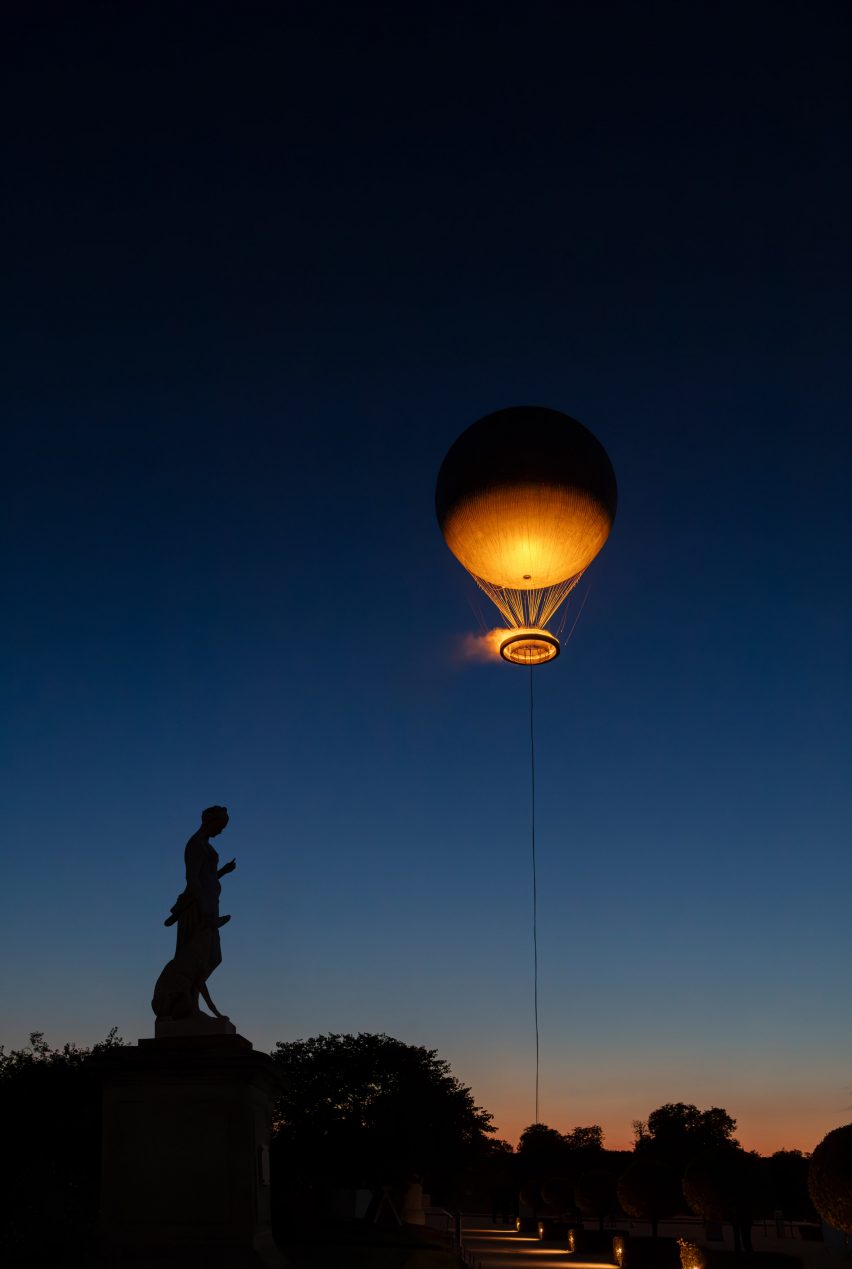
His design for the Olympic cauldron, which resembles a hot-air balloon and rises into the Paris sky every evening at sunset, was created to make the cauldron visible not just close up but from all across the city.
Rather than being lifted by hot air, the balloon is filled with helium, which is lighter than air and allows it to ascend.
And while the flame carried by the torch relay athletes still burns in a lantern next to the cauldron, the balloon's main ring of fire is made from electric lights and misted water.
Creating a flying cauldron was conceived as a way to bring it closer to the sun that started the original Olympic flame, Lehanneur explained.
"The very first torch in Greece at the beginning of every new Olympic Games is lit by the sun – you install parabolic mirrors to catch the rays of the sun," he said.
"And in this way, you create the flame, and it means the sacred fire that people are transmitting during the torch relay for thousands of kilometres is always part of the sun because the rays come from the sun," he added.
"The idea of the cauldron is to close the journey and close the story by bringing back the flame up to the sun."
New cauldron design avoids "insane" use of gas
The unusual design of the flame marks a change from previous games in that it is entirely fossil-fuel-free, a suitable choice for an Olympics that has set an ambitious sustainability agenda.
"In the past it used to be wood, but it's mainly been gas for the last decades, and you cannot imagine the quantity of gas you have to use, it's absolutely insane," Lehanneur said.
"At the very beginning when we started to talk about the idea of creating a flying cauldron and a flame that would be a new type of flame, the International Olympic Committee (IOC) told us it makes sense – we cannot keep going like we always did, for obvious sustainability reasons."
However, the aesthetics of the flame still had to be present.
"The IOC wanted to be sure that the flame would be beautiful enough, because the flame is a symbol – there is no function in the Olympic flame, it's only a question of ritual and symbol," Lehanneur said.
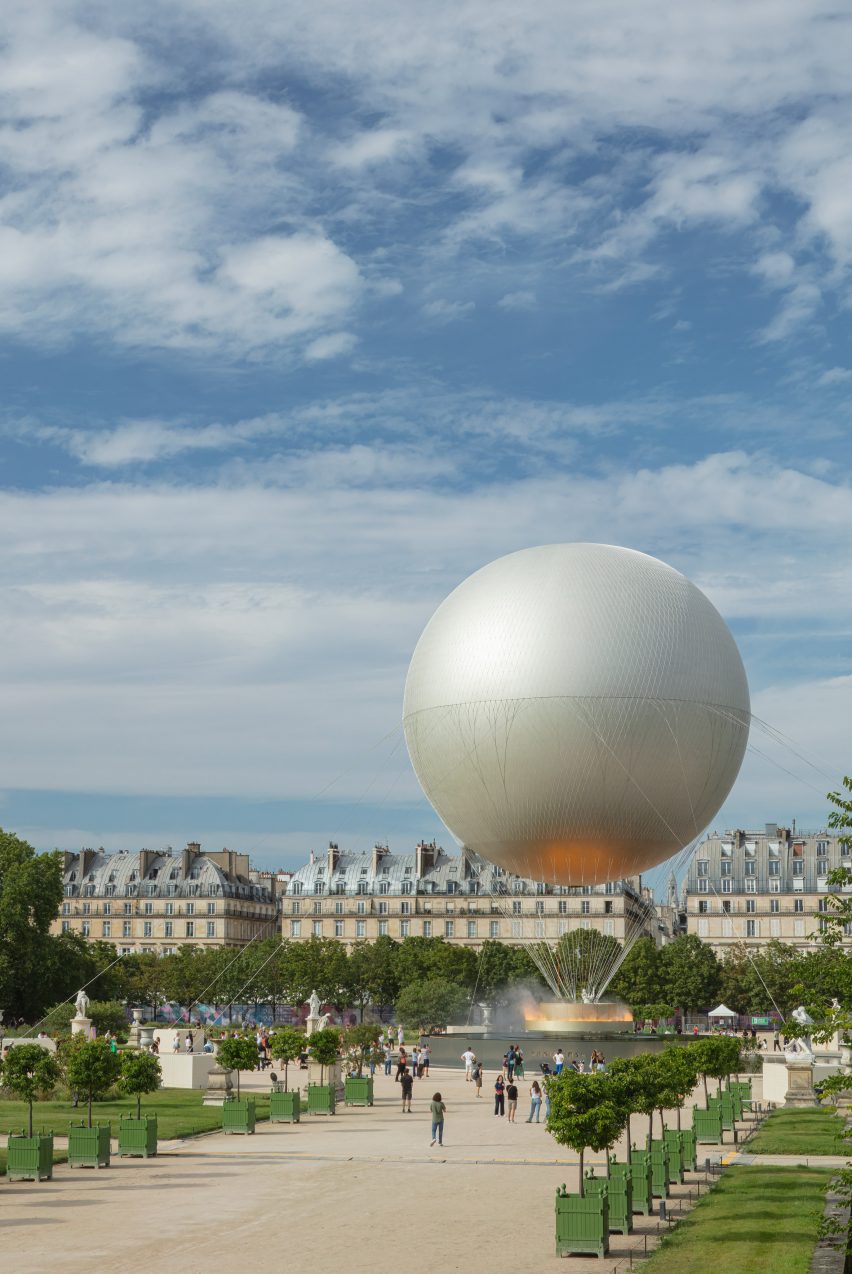
The cauldron also has a hidden, functional part of its design inside the platform on which it stands that isn't visible to viewers.
"You have to imagine that this platform is full of machines; for electricity, for creating the mist, for the water pressure, and you get many guys under this piece," Lehanneur said.
"You need many people operating it continuously, for the opening ceremony but even every single night when the balloon goes up."
Once the games conclude, the torches, which were made from recycled steel, and the relay cauldrons will be donated to museums and the cities where the torch relay stopped.
The main Olympic cauldron, however, could end up staying in its spot in the Jardin des Tuileries, where it has become a popular attraction for tourists and Parisians.
"With the Olympic cauldron, we had actually planned for it to be entirely recycled," Lehanneur said. "But something incredible happened – just the day after the opening ceremony, people started to want to keep it permanently."
"And we never thought about that, we never thought about that option," he added. "But people adopted this piece almost immediately."
Cauldron could stay in Paris
Both France's prime minister Gabriel Attal and Paris' mayor Anne Hidalgo have said they want to keep the cauldron, Lehanneur said.
However, every four years the flame has to be transmitted to the next city that hosts the Olympics, which means that the designer would have to think of what the cauldron's function could be after that.
"The question is, is it better to get an amazing souvenir that will remain in our minds or to keep something permanently that, for any type of monument – even an inflatable monument – will turn to become normal?" he said.
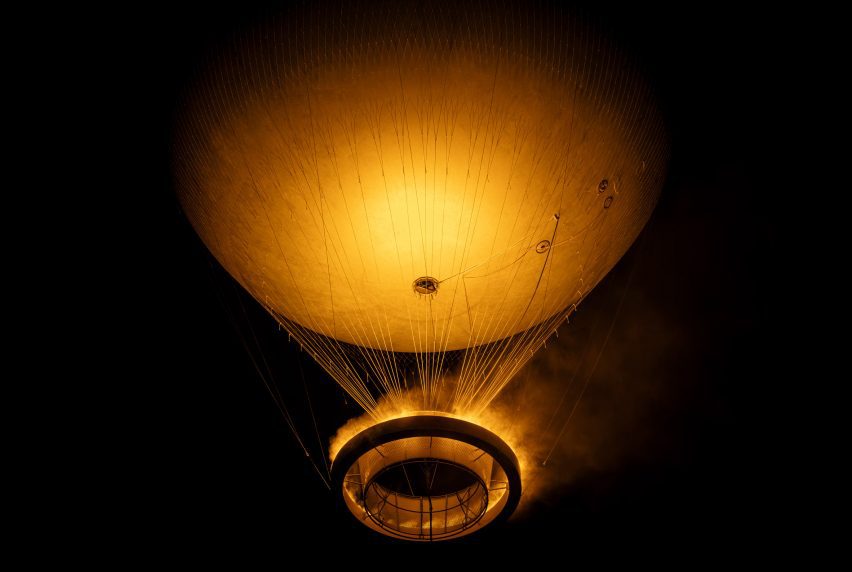
The balloon, which rises at 10pm, is currently watched by thousands of people every night.
"When it rises up, all the people ask for silence – you can hear the shushing," Lehanneur said. "You have 4,000 to 5,000 people and nobody talks – they just want to live this very specific moment in silence."
Dezeen has done a deep-dive into the sustainability aspect of this year's Olympics in our Olympic Impact series, including a roundup of the eight ways in which it is attempting to be the most sustainable games ever.
The photography is by Felipe Ribon for Raf studio.
Dezeen In Depth
If you enjoy reading Dezeen's interviews, opinions and features, subscribe to Dezeen In Depth. Sent on the last Friday of each month, this newsletter provides a single place to read about the design and architecture stories behind the headlines.